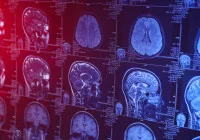Real-world data (RWD) has emerged as a powerful resource in clinical research, supported by artificial intelligence techniques that can curate and extract meaningful insights from vast and varied health records. Its use extends far beyond conventional clinical trial structures, promising improvements in patient safety, accelerated drug development and cost efficiency. Yet, despite the promise, significant challenges persist, from the quality and heterogeneity of available data to concerns about bias and regulatory compliance. The increasing recognition of both the opportunities and obstacles positions RWD as a crucial yet complex element in the evolution of clinical trial design and delivery.
Understanding the Value of Real-World Data
RWD encompasses information from outside the controlled environment of clinical trials, ranging from electronic health records and insurance claims to wearable devices and mobile applications. Unlike curated trial datasets, RWD provides a raw, unfiltered view of how patients live with diseases, respond to treatments and engage with healthcare systems. When processed effectively, this information can generate real-world evidence (RWE), a more refined product that can inform decisions across clinical and commercial settings. Advanced analytics, particularly machine learning and natural language processing, have proved instrumental in uncovering patterns and relationships within RWD that might otherwise remain hidden.
Life sciences companies are increasingly applying these approaches to accelerate trial design, identify suitable patient populations, refine study endpoints and improve sample size calculations. The benefits extend to greater diversity within trials, more accurate assessments of long-term outcomes and potential cost savings by reducing the need for extensive data collection. RWD also allows closer examination of real-world effectiveness and safety of interventions beyond controlled trial environments. These applications illustrate why RWD has become an area of heightened interest, even if its transformative potential remains under scrutiny.
Barriers to Effective Application
The promise of RWD is tempered by challenges inherent in its scale and complexity. Modern healthcare systems generate approximately a zettabyte of data each year, with the volume doubling every two years. This information is distributed across multiple silos in different languages, formats and coding standards, spanning structured datasets such as claims and unstructured inputs like clinical notes or imaging. The richness of this heterogeneity offers opportunities for deeper analysis but also creates substantial obstacles to integration and standardisation.
Incomplete records, observational biases and inconsistencies in data entry pose further risks. Much of the information available through medical records and claims tends to be episodic, offering only snapshots of patient experiences rather than a continuous record. Researchers must work carefully to identify missing elements, seeking supplementary data sources when necessary. Cohort selection adds another layer of complexity, as treatment patterns in clinical practice are not random, leading to risks of selection bias. Certain populations, for example, may be underrepresented because of lower healthcare utilisation or absence of claims data. Addressing these issues requires careful attention to methodological design and constant vigilance against misinterpretation.
Must Read: AI's Role in Accelerating the Need for Real-World Data in Healthcare
AI-driven algorithms can assist with analysis but cannot eliminate these limitations entirely. The responsibility remains with researchers to question assumptions, integrate relevant variables and account for care settings, drug availability, comorbidities and other influencing factors. Without such safeguards, conclusions drawn from RWD may fail to meet the standards required for clinical or regulatory decision-making.
Signs of Progress and Innovation
Despite these difficulties, progress is evident. Tokenization has emerged as a practical method for linking disparate datasets while preserving patient confidentiality. By replacing identifiable details with unique random codes, researchers can assemble broader and more accurate profiles of patient experiences without compromising privacy. Regulatory authorities have also advanced the field by issuing guidance that supports the integration of insights from unstructured RWD. These frameworks endorse the use of high-quality, curated datasets that focus on specific disease indications and therapeutic areas, helping to close knowledge gaps and broaden understanding of diverse populations.
Artificial intelligence continues to play a pivotal role, reducing the cost and complexity of data integration and analysis. Although not a solution in itself, AI has accelerated the ability to generate insights from large datasets and foster collaboration between clinicians, data scientists and other stakeholders. These developments signal a shift towards a more connected and data-driven approach to clinical trials, breaking down organisational silos and enabling improved allocation of resources. With greater clarity on the patient journey, RWD is facilitating more effective trial designs, streamlining communications and strengthening decision-making processes.
Such advances point towards a broader transformation in healthcare delivery and drug development. The integration of RWD into trial design not only increases efficiency but also ensures interventions are tested and validated in real-world contexts. This dual benefit of scientific rigour and practical relevance suggests that while RWD remains a challenging tool, its application could redefine the future of clinical research.
RWD represents both an opportunity and a challenge for modern clinical trials. Its capacity to accelerate development, enhance diversity and generate real-world insights is balanced against persistent barriers of data quality, bias and regulatory scrutiny. The evolution of technologies such as tokenization and advanced analytics, alongside regulatory support, signals that meaningful progress is under way. By acknowledging limitations while building on innovations, the healthcare sector can position RWD as a powerful contributor to more effective research, more efficient processes and improved patient outcomes.
Source: HealthData Management
Image Credit: iStock










